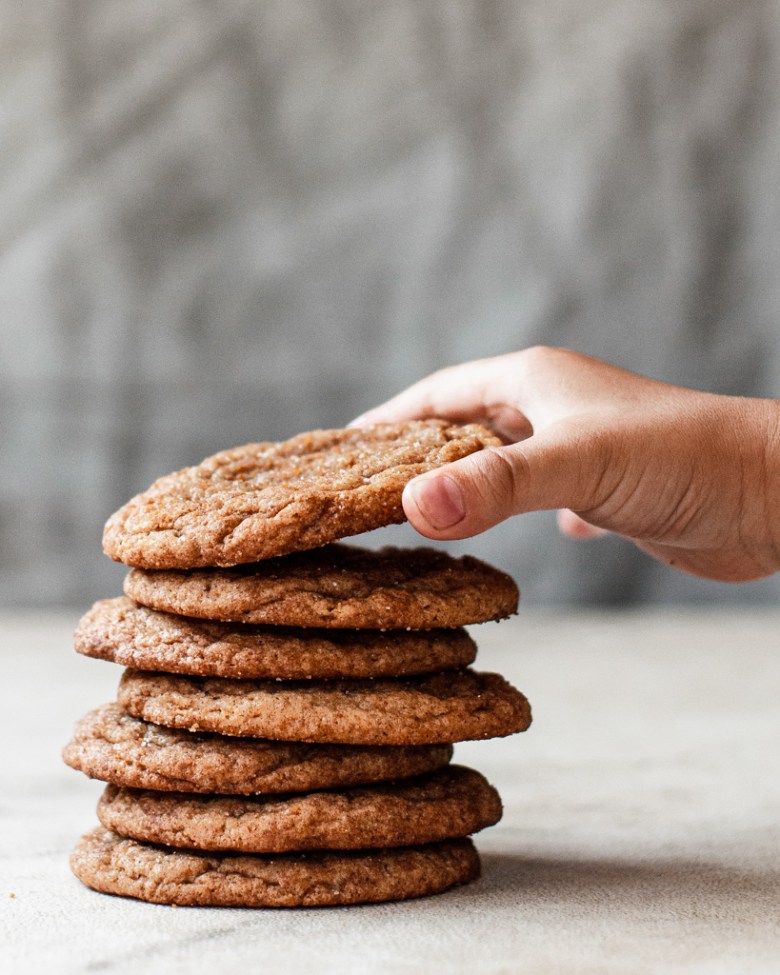
I’ve been obsessed with making ice cream for the past year or so, ever since one of our friends kindly gave us her ice cream maker. I grew up in an ice-cream loving household; birthday cakes were often boxes of ice cream decorated with candy (even though more than half of us are lactose intolerant).
I’d hemmed and hawed for a couple summers about getting an ice cream maker — was it worth the space? Would I really use it? And now that I have one, I honestly can say I only regret not having one sooner!
(Side note: Yes, there are lots of “no churn” ice cream recipes out there. And ways to get around not having an ice cream maker. If you can’t or don’t want to invest in a machine, might I suggest you explore semifreddo recipes? They have a beautiful smooth and mousse-like texture, and aren’t as sweet/heavy compared to typical no-churn recipes involving sweetened condensed milk and whipped cream.)
Once you find some base recipes you like, homemade ice cream is all about experimenting and creating your own flavors. Try flavoring the base with an infusion or addition, add a mix-in or three, or both! For this chocolate-frecked coffee and rye whisky batch, I infused the dairy with whole coffee beans, mixed in a little rye whisky before churning, then added in some melted chocolate at the end of churning to create chocolate “freckles.” So. Delicious. I can’t wait to make this one again!
A few notes:
- The base here is adapted from my go-to Philadelphia-style (eggless) ice cream base from Salt and Straw. It’s super easy to make, but it does require xanthan gum, corn syrup/glucose, and milk powder. I don’t recommend skipping these ingredients because they work together to create a beautifully smooth, non-icy ice cream that lasts well in a home freezer. I can easily source all three ingredients at my local bulk food stores and supermarket.
- There are a lot of ways to flavor ice cream with coffee, but what I particularly liked about this cold infusion method was that the coffee flavor is super clean and not bitter at all. (You also don’t end up with a brown-colored ice cream that screams “COFFEE” which I thought was kind of nice.) I recommend weighing out the coffee beans before you add them, and then weighing them after they’re strained out. The coffee beans will inevitably soak up some of the liquid, so you’ll want to replace it before churning. Weighing the coffee beans will tell you exactly how much liquid to add back.
- For best results, use fresh coffee beans. They don’t need to be super fancy or single origin, but fresh beans will impart the most flavor. I like to use an espresso roast, but use whatever you like.
One last note: my cookbook, Baked to Order, is now available for pre-order! It comes out November 17, 2020, and contains 60 sweet and savory recipes, with variations for every mood and craving. I can’t wait to tell you more about it in the coming months, but in the meantime please find more info on the Baked to Order cookbook page. Thank you so much for your support!

Chocolate-freckled coffee and rye whisky ice cream
Makes about 1 quart/liter
Ingredients:
- 100g (½ c) granulated sugar
- 15g (2 Tbsp) milk powder
- ¼ tsp xanthan gum
- ¼ tsp kosher salt
- 330g (1 1/3 c) whole milk, plus more as needed (divided)
- 40g (2 Tbsp) corn syrup or glucose
- 113g (1/2 c) whole coffee beans
- 330g (1 1/3 c) heavy cream, plus more as needed (divided)
- 30-45g (2-3 Tbsp) rye whisky
- 90g (1/2 c) bittersweet chocolate, chopped
- 1 1/2 tsp neutral vegetable oil
Method:
- Make the coffee ice cream base: In a medium saucepan, whisk together the sugar, milk powder, xanthan gum, and salt. Whisk in 330g milk and the corn syrup.
- Heat over medium, whisking constantly, until the mixture is steaming and slightly thickened and the sugar is dissolved, about 3 minutes.
- Remove the saucepan from the heat, add the 113g whole coffee beans, and cover. Infuse in the warm milk for 5-10 minutes. Pour the milk mixture and coffee beans into a heatproof container and stir in the 330g heavy cream. Cover and transfer to the refrigerator to infuse for 12 hours.
- Churn the ice cream: When you are ready to churn your ice cream, strain out the coffee beans with a fine mesh sieve. Weigh the coffee beans and subtract 113g — this is how much liquid was absorbed by the beans, and how much liquid you need to add back to the strained base via the rye whisky and extra milk/cream. (My beans weighed 213g, so I needed to add about 100g of liquid back. I added 40g of rye whisky, 30g milk, and 30g cream.)
- Churn the base according to the instructions for your machine, until the mixture has the texture of soft serve (for my machine this is about 20-25 minutes). While the ice cream is churning, melt the chocolate and oil together in the microwave or over a double boiler. During the last minute of churning, drizzle in the melted chocolate in a thin, steady stream.
- Transfer ice cream to a freezer-friendly container (a loaf pan works well). Cover with parchment paper, pressing it to the surface of the ice cream so it adheres, then cover with a lid. Freeze until firm, at least 6 hours. Ice cream will keep for up to 3 months.























